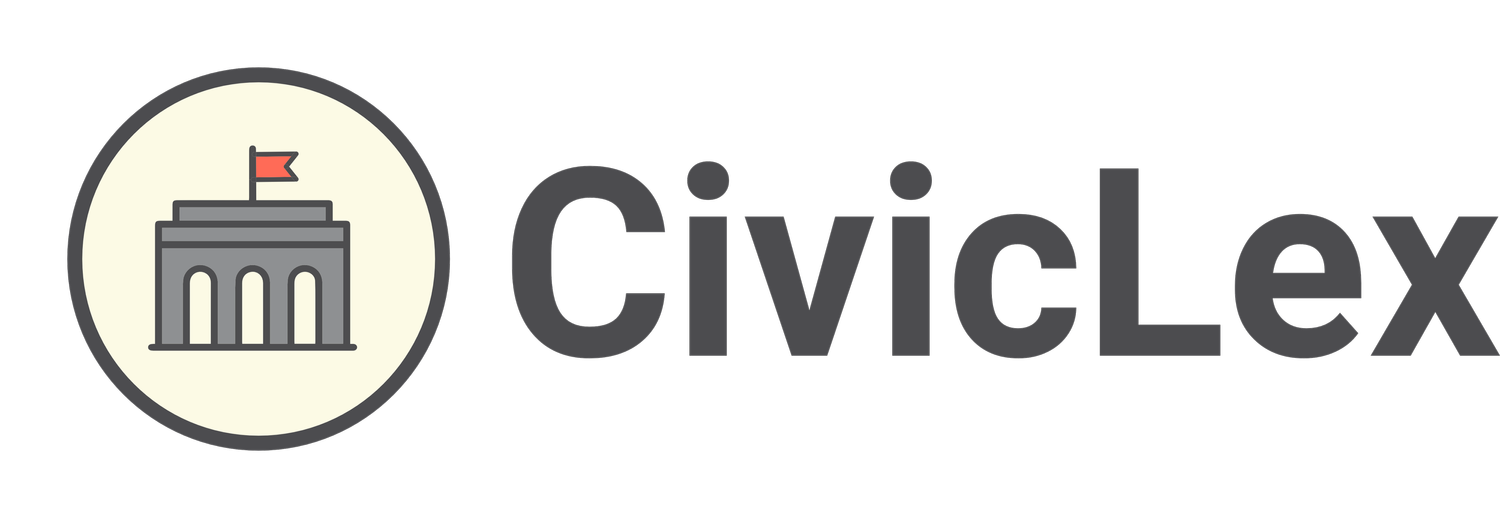RL Committee Meeting Summary: Meeting 1
The Redistricting Lexington Committee (RLC) met together for the first time on August 25th in the government center. The meeting was 2 hours long and covered a lot of ground, including:
Basic guidelines for redistricting
A presentation from GIS staff
A presentation from the Planning Department
A presentation from the County Clerk’s office
Discussion of how the committee would like to include public input (something CivicLex is very interested in!)
So, let’s jump in!
2021 Redistricting Guidelines
The first major rule guiding the RLC is that they have to meet in person, due to the August Kentucky Supreme Court ruling that all public meetings must be held in person and cannot be virtual. The chair of the committee stressed that anyone who feels like they need to resign for their own health can do so.
The RLC also approved other preliminary guidelines about the actual process of redistricting, like that districts should have population equality with a total deviation of no more than 10% and existing voting precincts cannot be changed. You can read the full list of the guidelines in the packet*.
Presentation from GIS Staff
After some of the ground rules were worked out, the RLC heard presentations from three different pieces of LFUCG. First up was Chris Doerge and Dustin Baker of GIS, who covered the following:
The brand new Lexington Redistricting Hub. This is an incredible tool with past maps, census data, demographic breakdowns, and a history of redistricting in Lexington.
How census data is broken up into smaller and smaller pieces, in the order of nation - state - county - tract - block group - block.
It’s a little confusing because the unit that the RLC will actually be using to draw lines - the Voting Precinct - isn’t any of these. A voting precinct is the size of several census blocks, and the GIS department converts the census blocks into these precincts. It’s not a perfect conversion, because sometimes precincts cut through census blocks, but the staff shared that this year only 5 of the 1000+ census blocks are split between two precincts, which is a pretty good margin!
Still with us? Let’s talk about planning!
Presentation from Planning Staff
Chris Woodall and Jim Duncan of the Planning department presented about what the new census data means for redistricting and the future of Lexington. We learned that:
Lexington’s population has increased by 9% since 2010, which is 1.6% higher than the national average.
The areas with the most potential for population growth in Lexington are areas that are inside the urban services boundary without much development on them right now. These include
The Coldstream/Coventry area
Hamburg East around Costco
Overbrook farm out Tates Creek Road.
The planning department does not have any data to track possible population growth from infill and redevelopment.
After covering population trends, Planning provided two potential maps for how redistricting could look this time around. You can view these maps in the packet*.
The “traditional” scenario- the RLC keeps the current council districts as similar as possible and just makes nips and tucks to account for population change. Jim Duncan, head of planning, described this as the “onesie twosie” method
The “compact” scenario- and was a more drastic change, with completely new districts and more representation for areas of Fayette County outside the urban services boundary.
They were clear that both of these maps are just potential drafts, and that each would need input from the RLC before being ready for approval
Presentation from the County Clerk
Don Blevins, the county clerk, was also present, mainly to discuss the actual timeline of redistricting.
While the committee has been working to meet the deadline of November 3rd, 2021, Blevins suggested an alternate timeline where the committee waits for the state legislature to redistrict Kentucky’s voting precincts in early 2021 and then finishes their own redistricting process by the legal deadline of April 2022.
The pros of this are that there would be less cleanup by the County Clerk’s office and the RLC would have more time to devote to making the best map possible.
The main con is that these new districts wouldn’t be ready in time for the next Local election, so it would actually be two years before they get “used”.
Traditionally, it seems like the redistricting is completed by the Fall of the year after the census.
At the end of the day, the timeline is not up to the RLC, it is decided by the city council. We will keep you posted if they decide to make a change!
Discussion of Public Input
Finally, the RLC discussed how they would like to include public input in their process.
There is no legal requirement to include public input, so it is totally up to the RLC
Several committee members brought up the issue of COVID and stated that the less people there are crowded into a meeting room, the better
Virtual or outdoor input sessions were favorably mentioned, as well as a survey similar to the ARPA process
Another committee member brought up that they would like to have a more clear direction of the committees path before soliciting input
All in all, committee members seemed to want to include public input as long as it is COVID safe and doesn’t derail meetings
CivicLex will keep you updated on any and all input options they decide on!
